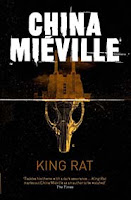This wonderful show provides a taster of some of the goodies that will be available in this north London venue’s 2016 dance programme
I can’t claim to be a dance expert. I’ve been Sadler’s Wells a total of five times, I’ve seen Billy Elliot and I watch Strictly. That’s the sum of my dance experience (unless you count the many lost hours in various clubs, which it’s probably best not to). But I do love it, so I’m trying to get to know it better.
It was with this in mind that I went to Sampled at Sadler’s Wells on 30 January. This two-hour show provides a small taster of the venue’s upcoming season, hence the name. I didn’t really know what to expect as I’ve never been before. The show started with a short film of interviews with some of the performers of the first piece, Outlier by Wayne McGregor. Then the auditorium went completely dark, the lights on the stage went up and the performance began.
 |
| Sampled at Sadler's Wells. I was a lot higher up than usual. Bit scary. |
Outlier is a contemporary ballet piece. To me it looked like ballet but exaggerated. There was an air of threat, of violence, to the performance. It was awe inspiring and powerful, but didn’t have the grace and beauty that I associate with ballet. It was stunning.
The act that really stole the show for me, though, were the duets by Julia Hiriart Urruty and Claudio Gonzalez. They danced two tangos in the first act. The first was heart-breakingly beautiful – the story of a man remembering his dead wife and bringing her back to life through dance. It moved me to tears. They also danced a more contemporary version to the song Wicked Game and then an impressively athletic tango in the second act. They were frankly amazing and I want to see them again – which is surely the point of the show. I will certainly be going to Immortal Tango at The Peacock next month.
Equally impressive, and also on the ‘must see again’ list, was Connor Scott performing his piece Get Up. This contemporary dance won him the BBC Young Dancer 2015 award, and it’s easy to see why. The piece was powerful, athletic and yet graceful; this 17-year-old is certainly one to watch.
The first was heart-breakingly beautiful – the story of a man remembering his dead wife and bringing her back to life through dance
Special mention must go to The Ruggeds, a world champion b-boy crew from The Netherlands. They performed Adrenaline, possibly the most appropriately named piece of the evening. This isn’t a dance form that I would usually watch, but I thoroughly enjoyed it and anyone with an interest should really book tickets to Breakin’ Convention ‘16, Sadler’s Wells’ festival of hip-hop dance.
Much more traditional was Zenaida Yanowsky’s rendition of the Dying Swan from Swan Lake. Making up the rest of the programme were BBC Young Dancer finalist Vidya Patel, performing a traditional Kathak dance Khoj - The Search, and 7 Fingers with Nocturnes, a dreamlike contemporary dance and circus crossover.
They were all excellent. All incredibly different and a wonderful example of the breadth of dance styles. I had a thoroughly enjoyable evening and will definitely be sampling (haha! Sorry …) this show again next year.


























